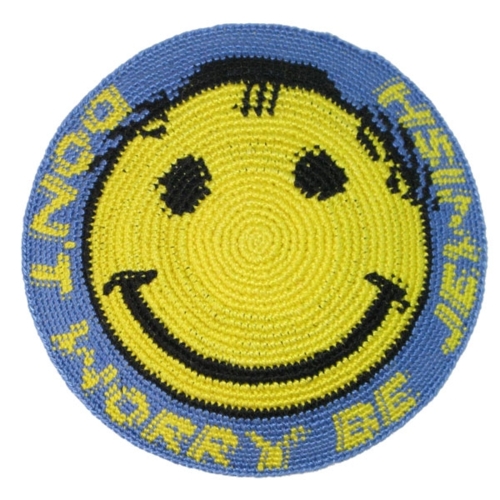
Headwear is kind of a big deal in Judaism. The accurate assertion is often made that, in Jerusalem, you can learn a lot of information about someone just by looking at what hats they wear. On college campuses, certain flat-brimmed baseball caps or the occasional fedora might tell you something about an individual, but they do not carry the same types of theological implications that different styles of kippot carry in Israel.
As a result, I did not really think about my personal connection to hats until last year. I have a pretty diverse collection of silly hats, fit for many occasions, but I only owned five kippot as 2012 began. In May, however, I started to ponder the idea of wearing a yarmulke every day, and when I headed to D.C. for the summer, I figured I would try it out, and I have stuck with it since.
This choice was not made for fashion reasons, nor was it made because I felt like I was becoming more traditionally observant. In fact, the kippot I chose to wear were anything but traditional. The five kippot in my lineup were the following: (1) grey with Family Guy’s Stewie Griffin prominently displayed (2) grey with a variety of Rugrats characters (3) a rainbow-colored kippah that would fit in quite well at liberal D.C. political events geared towards LGBTQ advocacy (4) grey with Mickey Mouse and the words “yeled tov,” meaning “good boy,” and (5) a red yarmulke with the Pringles mascot on it.
My decision to wear these, and not traditionally patterned or monochromatic kippot, was not accidental. To this day, even though I now own close to twenty kippot, I will only wear kippot that I look at and would identify as “fun.” By doing this, I’m attempting to send a very straight-forward message that I think unfortunately does not come across otherwise. Judaism, for me, is most importantly a way for me to have fun with people I love. That is why I pray, why I engage with Jewish holidays, and why I feel a natural connection to Jewish learning of a variety of different forms. Jewish is incredibly fun. Because yarmulkes an incredibly prominent symbol of my Jewish identity, it would seem like a misrepresentation if I wore anything other than a “fun” kippah on my head.
By doing this, all of a sudden I found myself having a whole slew of conversations that never would have happened otherwise. Passersby in the airport stopped me and asked me how it could be that having Stewie Griffin on my head was not “sacrilegious.” Non-Jews at coffee shops who previously thought that you were only allowed to wear black head coverings learned that Pringles can, in fact, be on your head as well, and as evidence I proudly informed them that this Pringles yarmulke was bought in, of all places, a Judaica shop in Jerusalem. In short, I have tried to do my part to show people that Judaism is not just about being “serious,” and that having fun is a crucial part of what we do.
In case anyone is curious, my arsenal now includes a Paul Frank monkey yarmulke, the logo of Disney’s The Mighty Ducks, a customized kippah with my a cappella group’s logo, and one with the face of Lex Luthor, the evil villain in Superman. Wearing a visible symbol of my Judaism on my person, despite how unorthodox it might be, forces me to think about how my actions reflect on the Jewish people as a whole, and has forced me to think a lot more thoughtfully about the choices I make in public. It has helped me connect with other Jewish people in locales that might not have large Jewish populations. It has even achieved certain practical concerns, such as helping visitors to my campus find the Hillel building (this has happened 4-5 times on campus tours…visitors correctly figure the skullcap is a pretty decent indicator that I’d know where the center of Jewish life on campus is, and so they ask). Most importantly, though, my kippah choice have caused confusion. We generally see confusion as a negative, but the questions and conversations it can provoke are vitally important.
The prayer “Ahavat Olam,” part of the daily evening service, includes a wonderful passage that reads “v’nismach b’divrei toratecha uv’mitzvotecha l’olam va’ed.” The word “nismach” comes from the root “simcha” meaning happiness It translates approximately as “And we will be happy delving into the words of your torah and your commandments forever.”
If it said “we will be serious,” I might cover my head in black. But it doesn’t. It says “we will be happy.” While black kippot may have a rich tradition, I become far happier when I see Tommy Pickles, The Mighty Ducks, or Pringles. For that reason, I won’t be taking them off my head any time soon.

